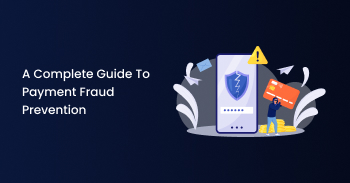By Sudesh Prabhu
Chief technology officer
Introduction
One of the most intricate and sophisticated sectors in the digital world is the financial industry, which serves as a delicate point of contact for illegal and suspicious activity. For example, Forbes highlights the RBI’s view on bank frauds exceeding 302.5 billion rupees, equivalent to INR 30,000 crore. The insight clearly conveys that the current financial sector is in high need of a reliable and effective Anti-Money Laundering (AML) solution to combat ill-legal transactions and regulate compliance security.
With the global AML market surging to $11.9 billion by the year 2030, it clearly emphasizes the importance of risk management and regulatory adherence in the current digital world. Centering around detecting and monitoring transactions in real-time, customer on-bording risk scoring, risk based transaction monitoring, suspicious transactions, and risk and compliance management, the AML solution aims to combat the digital fraud crimes that trigger unwanted money laundering risks. The significance of the AML solution cannot be overlooked in such uncertain conditions. A deep dive into the blog will help you analyze anti-money laundering solution features, implementation strategies and what it has to offer your organization.
Features of AML solutions that help combat financial crime
To prevent identity theft on the spot, it is essential to have a robust framework of anti-money laundering software solutions that are modern, cognitive and automated. Let’s have a quick look at the essential features that need to be present for the AML solutions to act upon frauds in real-time.
Customer on-boarding risk scoring:
The likelihood of banking crimes can be reduced with the initial screening of customers in regards to their transaction volume, jurisdiction, source funds, cash flow and other patterns of behavior. From assessing customer profiles to assigning risk scores through machine learning or analytical algorithms to categorizing customers based on risk scores and triggering additional scrutiny rules, the integration of an AML solution into the banking infrastructure is crucial. It also helps to integrate the risk scoring capabilities into the on-boarding workflow to automate the risk assessment and decision-making process. Thus, customer on-boarding risk scoring acts as a protected gateway against on-boarding new customers whose profile might be a threat and disturb the integrity of banking operations.
Real-time transaction monitoring:
With the financial sector operating around the clock, there is a need for a system that helps with real-time monitoring. An AML solution that is cognitively intelligent enough to alert suspicious activity on the spot based on pre-defined rules and algorithms helps capture threats that are unusual and unseen. By integrating with various data sources like customer profiles, risk scoring, watchlists, and sanction lists, the real-time transaction monitoring elevates the accuracy and effectiveness of detecting digital fraud. This aspect of AML solutions acts as a proactive measure to minimize the risk associated with financial crime.
Suspicious transaction reporting:
As much as it is important to detect illegal transactions, it is also important to report them on time to avoid penalties and fines. Any suspicious transaction, when encountered, should be filed with the regulatory authorities, who are responsible for handling financial institution compliance. Filing of such activities takes place under strict regulations, where there is no leakage of information or entity details involved in the transaction. Upon receiving the information, the authorities in charge determine the validity of the reporting and then escalate to the next level with law enforcement agencies, intelligence services, and other relevant parties to gather additional information and evidence. Thus, the feedback received from intelligence agencies on the STR helps refine the risk monitoring process, detection capabilities and compliance programs.
Implementation of anti-money laundering services for effective outcome
Implementing effective AML solutions requires a thorough understanding of the following criteria. From planning to implementing the process of AML set-up is crucial to deliver accurate results.
Know the regulatory requirements
Undergo a thorough understanding of AML regulations and compliance adherence, KYC requirements, and transaction monitoring. This will help in knowing how far you can have it implemented for your banking operations.
Assess the risk management
Conduct a detailed examination of the kinds of risks your business may encounter with respect to business operations, transaction volumes, location and other factors. This examination will help in enabling more robust AML solutions that meet your business requirements.
Define policy and procedure
Customize the AML solutions predefined rules and algorithms based on your business risks and regulatory requirements. This way, you can have more impactful, tailored and updated monitoring that reflects on your business risks in real time.
Determine the right technology
Make sure the appropriate tools and technology are enabled to keep your business on the cutting edge. Ensure that your AML solutions have in-built features like real-time transaction monitoring, suspicious transaction reporting, case management, and the customer on-boarding process. Having access to these technologies ensures you gain accurate detection measures.
Educate on AML
Provide a detailed awareness of what AML risks, the need for a defensive mechanism and their roles and responsibilities. Also highlight the importance of adhering to stringent regulatory and compliance measures, for they change the scenario of business operations if not. This awareness will help your business step up beyond financial fraud and digital crimes.
Testing process
Integrate the selected AML solution into your current workflow and test its operations. Check how well the data is protected from unauthorized access, and also measure the alert mechanism.
Implement through a pilot project
Deploy the AML solution to your bank infrastructure in a phased manner through any pilot project. This way, you can monitor its performance, detect any issues and make any necessary adjustments before the final rollout.
Thus, implementation planning and strategizing for anti-money laundering software solutions can be effective in analyzing their operations for the financial sector. The phased manner approach will help fintech professionals understand the nuances of the AML solution process in mitigating the illegal practices ongoing in the financial ecosystem.
Explore the perks of AML risk management
Enhanced security:
From screening customer’s on-boarding processes to real-time monitoring for illegal transactions, heightened security is achieved that financial institutions can make use of in protecting their customer data and banks reputations from illicit funds entering the banking system.
Operational efficiency:
The automation process of AML solutions helps reduce the manual intervention of professionals in monitoring and detecting financial crimes. Leveraging technologies that can take care of routine tasks helps focus on higher-priority job functions that further enhance business performance.
Risk mitigation:
The chances of reducing the risk involved with money laundering and other banking crimes are far better monitored and detected with an AML solution. This gives an upper hand in spotting early detection of suspicious transactions and measures to reduce the degree of associated risks.
Competitive advantage:
Staying ahead of peers is very crucial in the competitive market. Having your fraud monitoring system on point helps elevate the game of trust and reliability among customers. This assists in positioning the fintech landscape on a global scale.
Simplify financial security instantly with BANKiQ
Given the rise in banking crimes, there’s a critical need for a versatile platform that serves both issuers and acquirers while remaining adaptable to different data sources. Recognizing this demand, BANKiQ offers a unified platform designed to handle sensitive transactions effectively. It provides personalized case management and automated preventive measures to detect and deter suspicious financial activities. The cognitive machine learning powering BANKiQ’s AML solution, along with strong data management and pipelines, improves its capacity to detect fraud in real-time across various transactions. Addressing the challenge of illicit funds entering financial markets, BANKiQ stands out as a valuable partner for businesses seeking to minimize losses and protect their reputation. Choosing an AML solution vendor with the capability to defend against evolving threats is essential for safeguarding your business.
Get your business safe and secure with BANKiQ now!
Conclusion
In closing, it is clear that managing a financial landscape is beyond monetary management. The power to detect and monitor financial frauds is a primary and predominant responsibility for the sector to stay relevant in the age of digital fraud. The adoption of an effective anti-money laundering technique helps in combating financial crimes that safeguard the integrity of financial data and maintain compliance. The risk-based approach offered by AML solutions helps develop a robust framework that encompasses real-time transaction monitoring, the customer on-boarding process and other risk mitigation strategies.
Deploying AML solutions with the assistance of a vendor who takes complete responsibility for planning, strategizing and implementing them helps ensure effective risk management and evolving compliance adherence. Thus, investing in an AML solution proves to be beneficial for the banking sector to act with vigilance against financial crime and promote a strong culture of integrity and responsibility that contributes to the stability and integrity of the global financial system, ultimately benefiting society as a whole.





